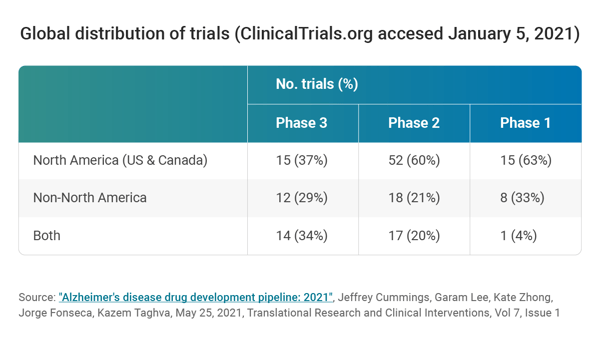A Landmark FDA Approval For Alzheimer’s Shakes Up Industry
On June 7th, 2021, accelerated regulatory approval was granted for Alzheimer’s drug, Aduhelm (aducanumab), designed to slow cognitive decline by reducing amyloid beta plaques in the brain. FDA’s approval marks the first new treatment for Alzheimer’s in 17 years. Estimates suggest 35 million+ people worldwide suffer from Alzheimer’s Disease.
The basis on which the therapy was approved may have set a new regulatory precedent for approvals of drugs for Alzheimer’s and other neurodegenerative diseases with limited treatments options.

Signals for New, Accelerated Pathways to Approval
This potentially opens the door for new pathways to approvals, and may signal the FDA’s willingness to accelerate treatments to patients suffering from these devastating diseases. It can also serve as a catalyst for increased investment and innovation in these disease areas both for active pipeline and potentially revisiting mothballed drugs, all of which can be great news for the industry and is much needed for patients.
At QMENTA we believe that using quantitative multi-modal analysis for Alzheimer’s Disease (AD) clinical trials is imperative to progress therapies to approval. We are committed to empowering new AD therapies development to combat the ever more devastating societal, healthcare and economic impact of this awful disease.
Working with you, our neurology and data scientists can perform cost-efficient retrospective analysis of past phase 2 and phase 3 trials for AD. We can easily and quickly aggregate, classify and analyze your clinical, real-world and neuroimaging data in real time from global sites with strict data quality control and protocol adherence.
Importance of Using Imaging in the Approval Process
Our cloud based software platform facilitates both the automated computation of imaging based biomarkers as well as central reading of images including supporting flexible adjudication workflows where multiple readers can review the images directly in the browser. This will help to better design your further studies or provide the basis for approvals for retrospective studies.
Some key biomarker capabilities include:
-
Alterations in cerebral blood flow
-
Alterations in connectivity- and non-connectivity based fMRI measures.
-
Changes in cortical thickness
-
Volume and thickness alterations of various cortical and subcortical regions
-
Longitudinal volumetric changes in cortical and subcortical regions of interest
-
Segmentation of white matter lesion
-
Changes in white matter integrity using diffusion for specific white matter fascicles
-
Changes in the structural brain connectivity
-
Damage to specific white matter fascicles due to the presence of white matter lesions
Key Benefits of a Fully Integrated, Data Rich Approach
Schedule a call with our experts to discuss how we can help you rapidly advance your Alzheimer’s studies, at higher quality and lower cost, in light of these important new regulatory developments. Key benefits of our integrated cloud platform approach include:
-
Consolidation of neuroimaging studies on one cloud platform
-
Global data aggregation and full regulatory compliance
-
Streamlined, end-to-end data and neuroimaging management
-
Standard quantitative, and advanced AI biomarker analysis
-
Centralized reading by our experts or yours
-
Ability to compare quantitative results to a normative database
-
Highest quality reporting and data exporting for approval submissions.


